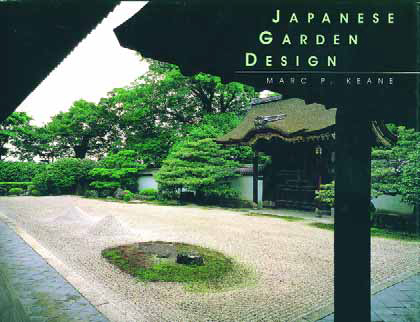Art from the East

If you’ve been looking for a well-written, beautifully illustrated book that cracks the code when it comes to the design principles of Japanese gardening and introduces the full range of styles found in this ancient art form, you can’t go wrong with Japanese Garden Design. Written by designer Marc P. Keane (and published by Charles E. Tuttle in 1996 but still in print), the book offers a detailed examination of this most influential of styles.
For watershapers, landscape designers and garden specialists reared strictly in Western design traditions, studying Japanese gardening provides a wealth of alternative ideas having to do with specific ways you construct, harmonize and balance a design.
As you get involved, you’ll discover that Japanese gardening is about a whole lot more than lanterns, maples and bamboo. Those are just the most obvious manifestations of a style that has deeper and much more complicated roots that run through centuries of Japanese design philosophy and art history.
The book holds Japanese gardening up as a model to Western designers, but Keane recognizes practical limitations on achieving that look in the here and now in other places. That in mind, he argues that designers working in most any style with stone, plants and water can create what he terms “Japanese-spirited” designs.
He guides readers in that direction using examples of famous gardens and giving us access to unique private spaces as well. Along the way, Keane explains the Japanese methods for creating balance and harmony within designs by layering views, creating surprise and interest with footpaths and bridges and, most of all, by replicating nature.
It is in this replication (as distinguished from duplication) of nature that Keane offers his greatest insights into the ways Japanese garden designers have used both stone and water as representations of streams, rivers and surrounding mountains so prevalent in the island nation.
All this inspiration comes with a caveat: Many of my clients want beautiful plant material and fantastic spaces, but they also want those plants and spaces to be maintenance-free, with automated irrigation and streamlined service. Japanese gardens, by contrast, are meant to be constantly pruned and cared for, so it represents a real change of pace in many respects for both clients and designers.
And as Keane explains, this ongoing care of Japanese gardens is as important in creating the “art” as is the initial installation. In this sense, he concludes, Japanese gardens may not be for everybody
The book also goes into great historical detail about the various styles of gardens and how they were created for people at different rungs of society. From the great, sprawling imperial gardens of Japanese royalty to the tiny private gardens found in the nation’s teeming cities, the principles used to organize space for the purpose of viewing, meditation and relaxation offer today’s watershapers an undeniably rich set of design ideas and approaches.
Mike Farley is a landscape designer with more than 20 years of experience and is currently a designer/project manager for Claffey Pools in Southlake, Texas. A graduate of Genesis 3’s Level I Design School, he holds a degree in landscape architecture from Texas Tech University and has worked as a watershaper in both California and Texas.










